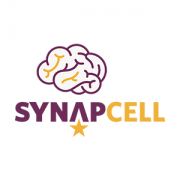SYNAPCELL’s article about the MTLE model published
We are delighted to share with you the publication of our article about the MTLE mouse: a model of focal epilepsy in CNS Neuroscience and Therapeutics. Our work is entitled “Differential effects of antiepileptic drugs on focal seizures in the intrahippocampal kainate mouse model of Mesial Temporal Lobe Epilepsy”.
Here are the details of the article abstract:
AIMS: Mesial Temporal Lobe Epilepsy (MTLE) is the most common form of drug-refractory epilepsy. Most of the morphological and electrophysiological features of human MTLE can be reproduced in a mouse by a unilateral intrahippocampal injection of kainate (MTLE mouse model). The effects of antiepileptic drugs (AEDs) on the occurrence of recurrent focal hippocampal seizures in this model remain to be specified. Here, we addressed the pharmacological reactivity of this model to the most commonly used AEDs.
METHODS: Using depth electroencephalographic (EEG) recordings, we tested the dose-response effects of acute injection of nine AEDs on the occurrence of hippocampal paroxysmal discharges (HPDs) as well as on ictal and interical power spectra in the MTLE mouse model.
RESULTS: Valproate, carbamazepine and lamotrigine dose-dependently suppressed HPDs and modified the general behaviour and/or EEG activity. Levetiracetam and pregabalin suppressed HPDs at high doses but without any behavioural nor interictal EEG changes. Finally, phenobarbital, tiagabine, vigabatrin and diazepam suppressed HPDs in a dose-dependent manner at doses devoid of obvious behavioural effects.
CONCLUSION: The MTLE mouse model displays a differential sensitivity to AEDs with a greater efficacy of drug that facilitates GABAergic transmission. This model provides an efficient tool to identify new treatment for drug-resistant forms of focal epilepsies.
Learn more: http://www.ncbi.nlm.nih.gov/pubmed/26899987




Leave a Reply
Want to join the discussion?Feel free to contribute!